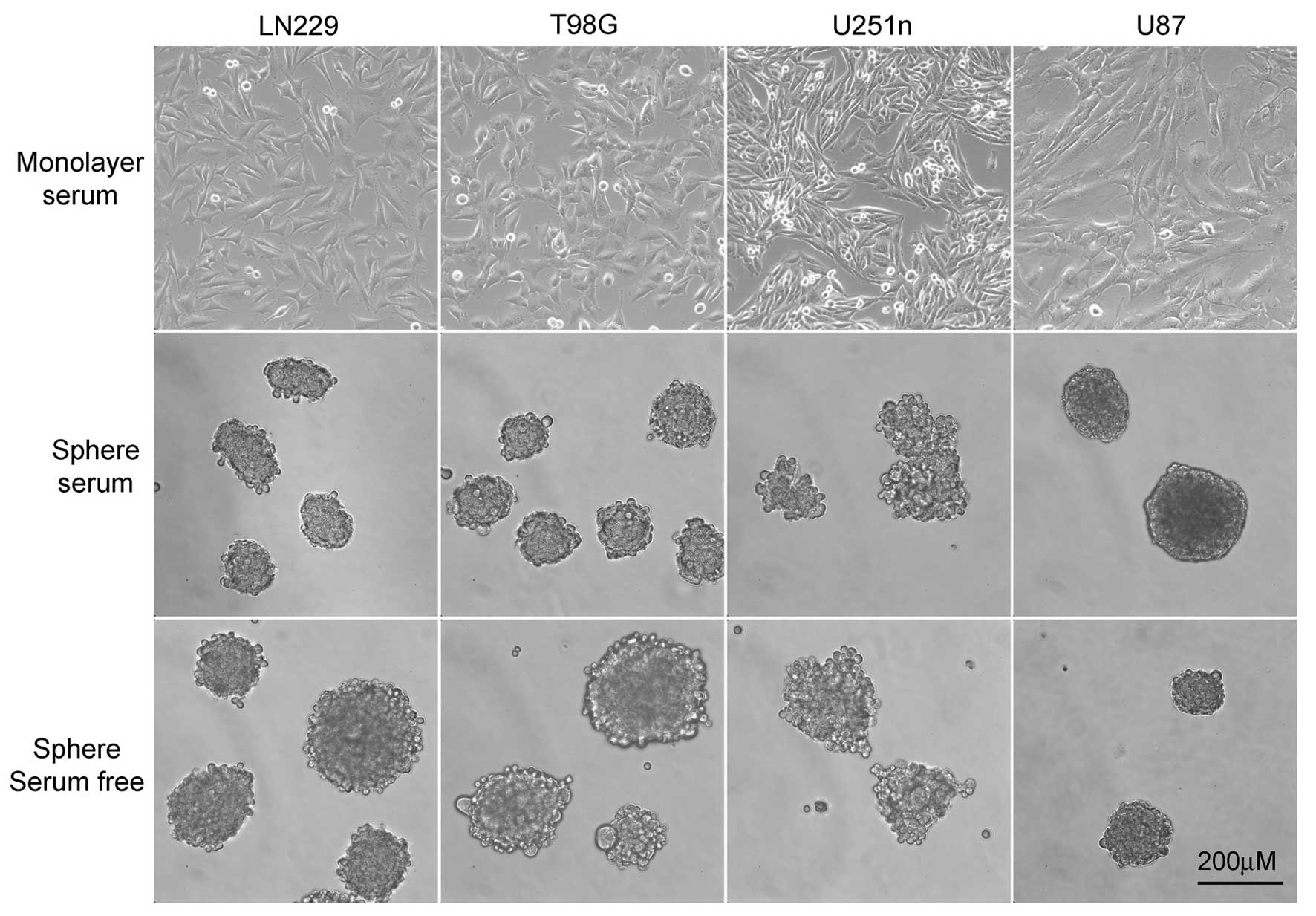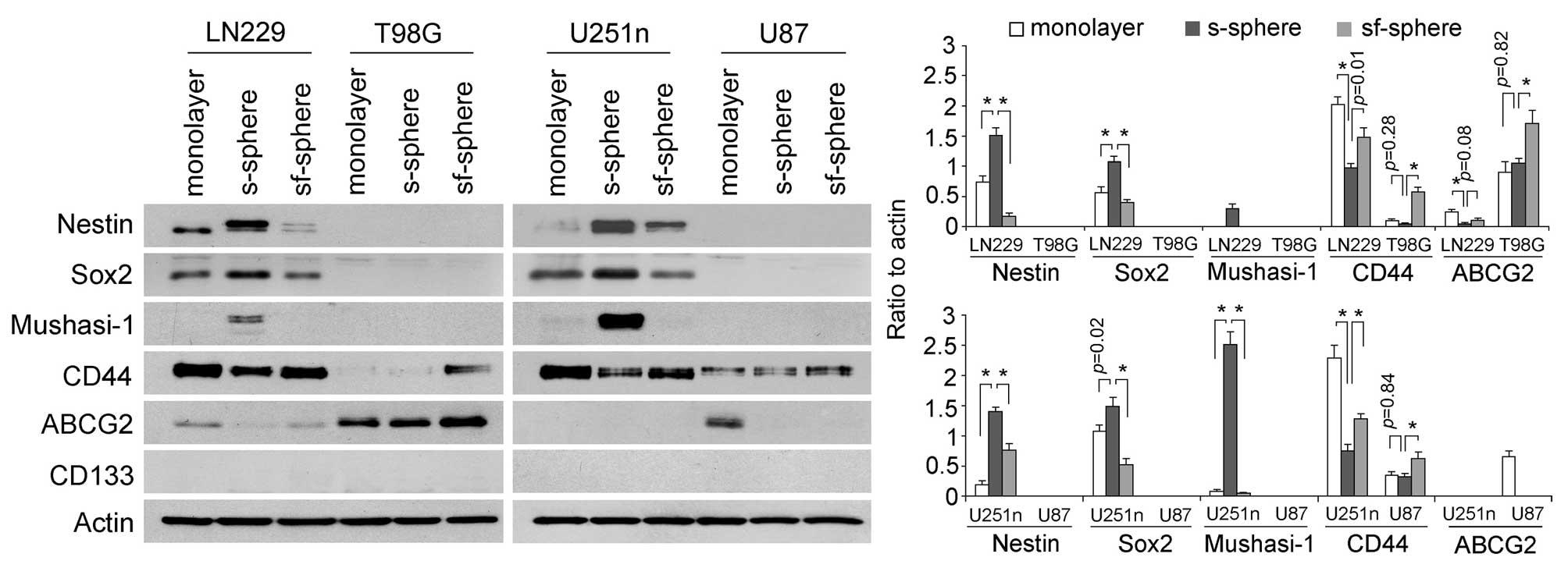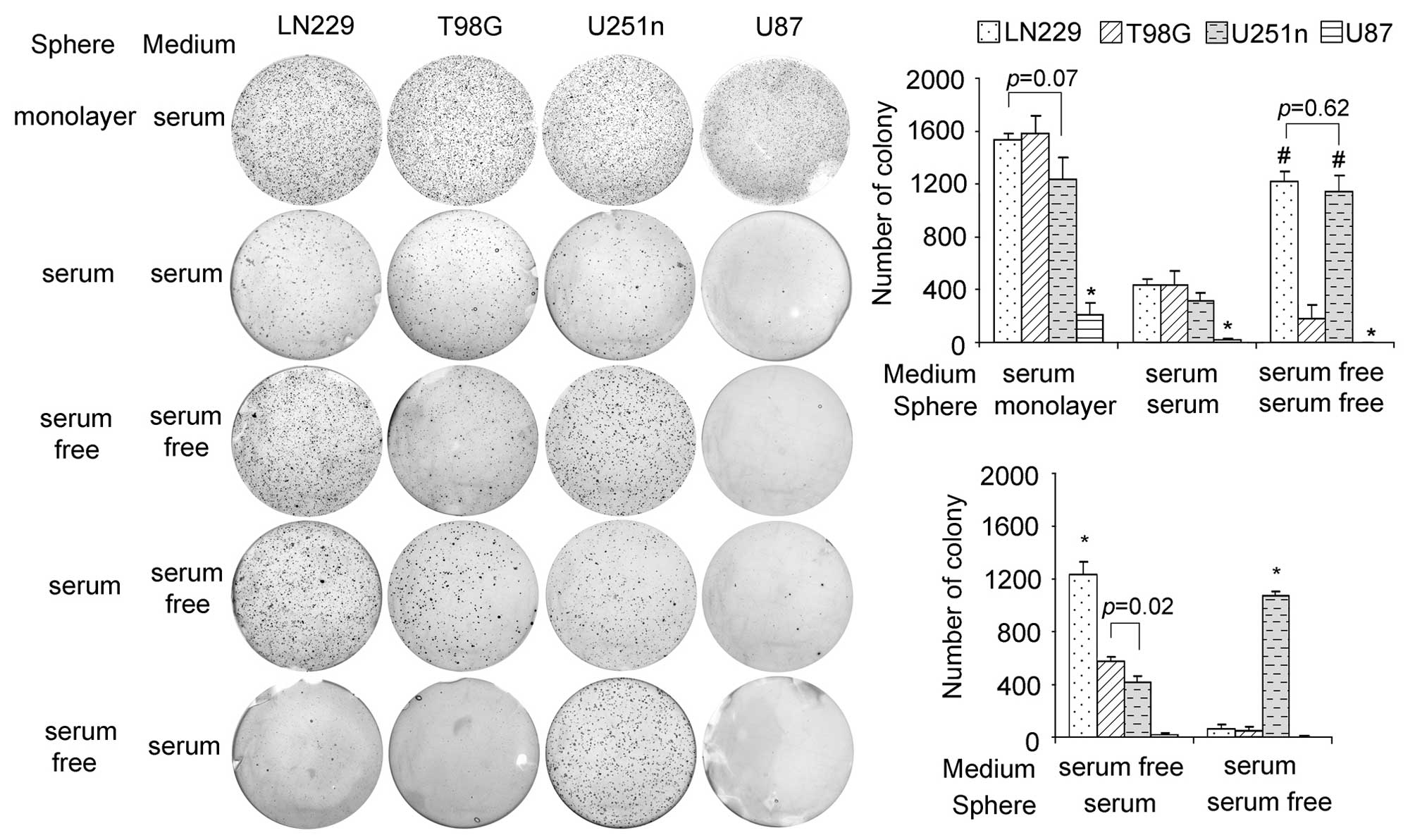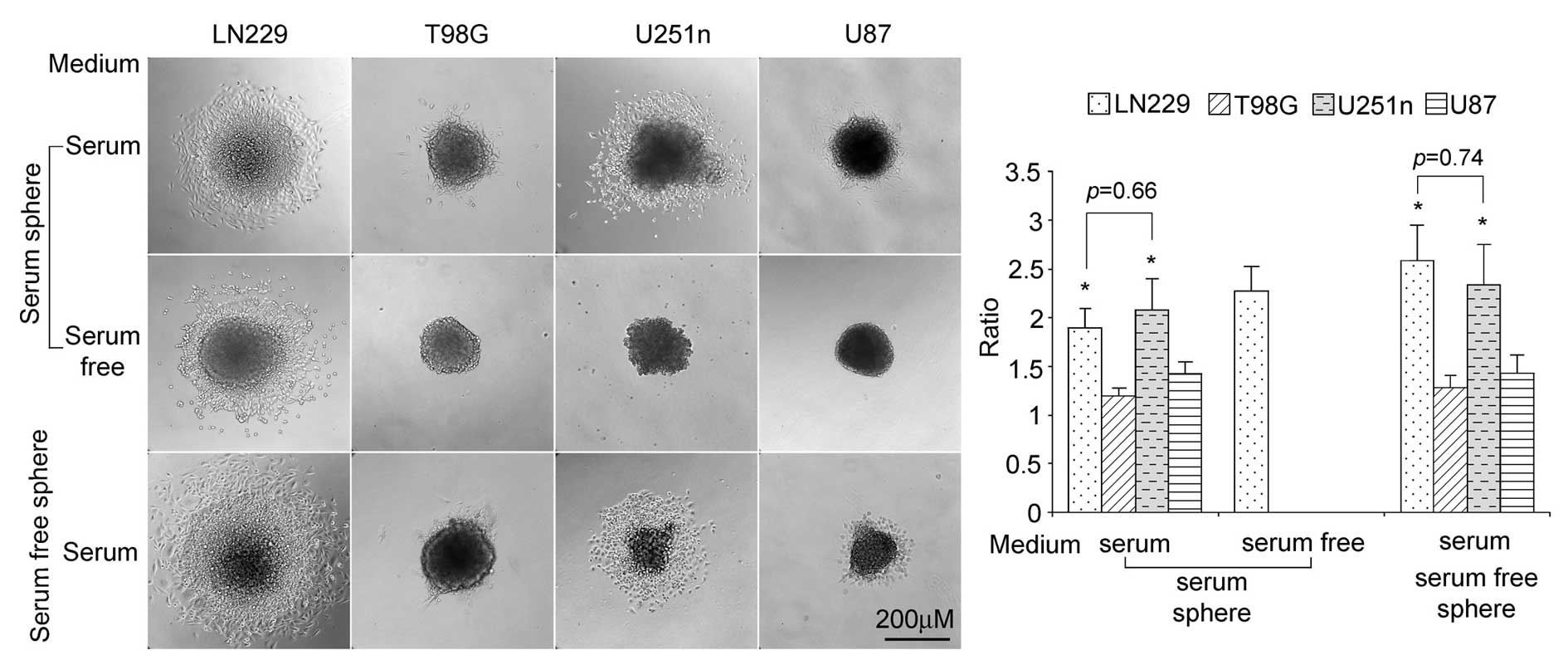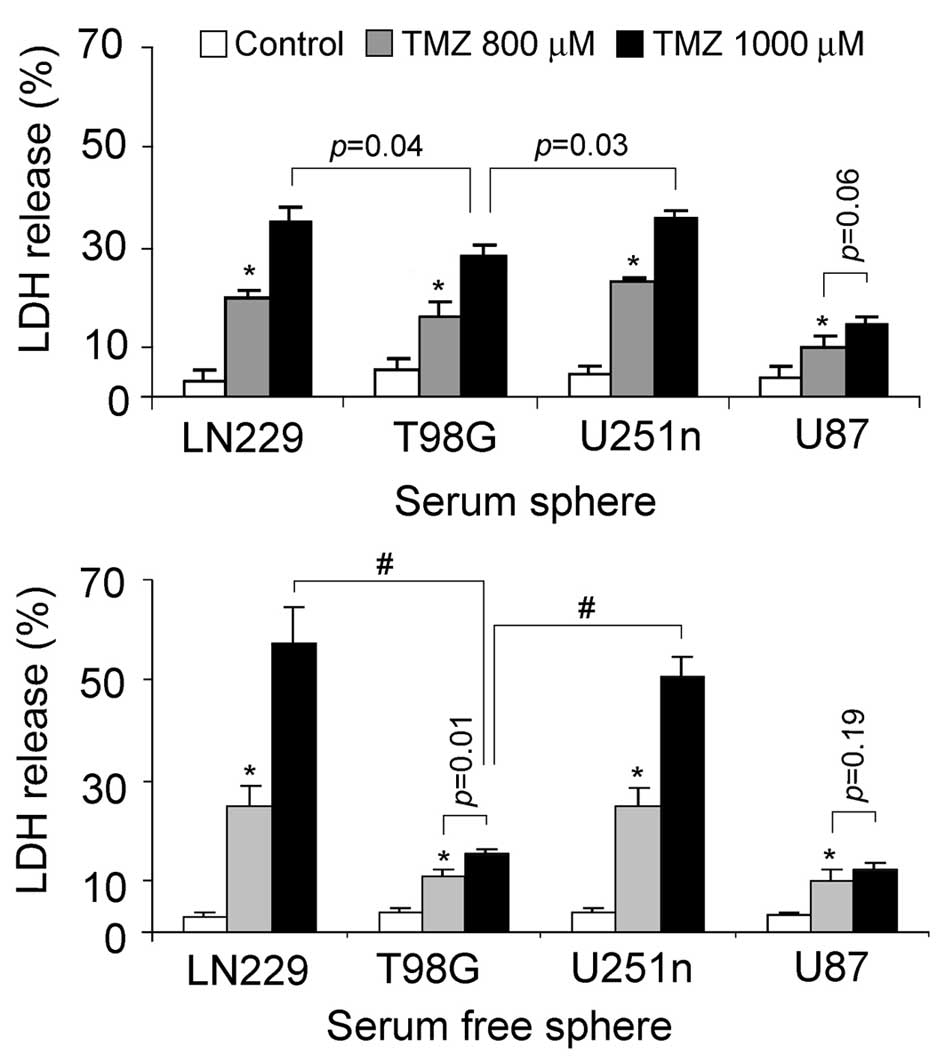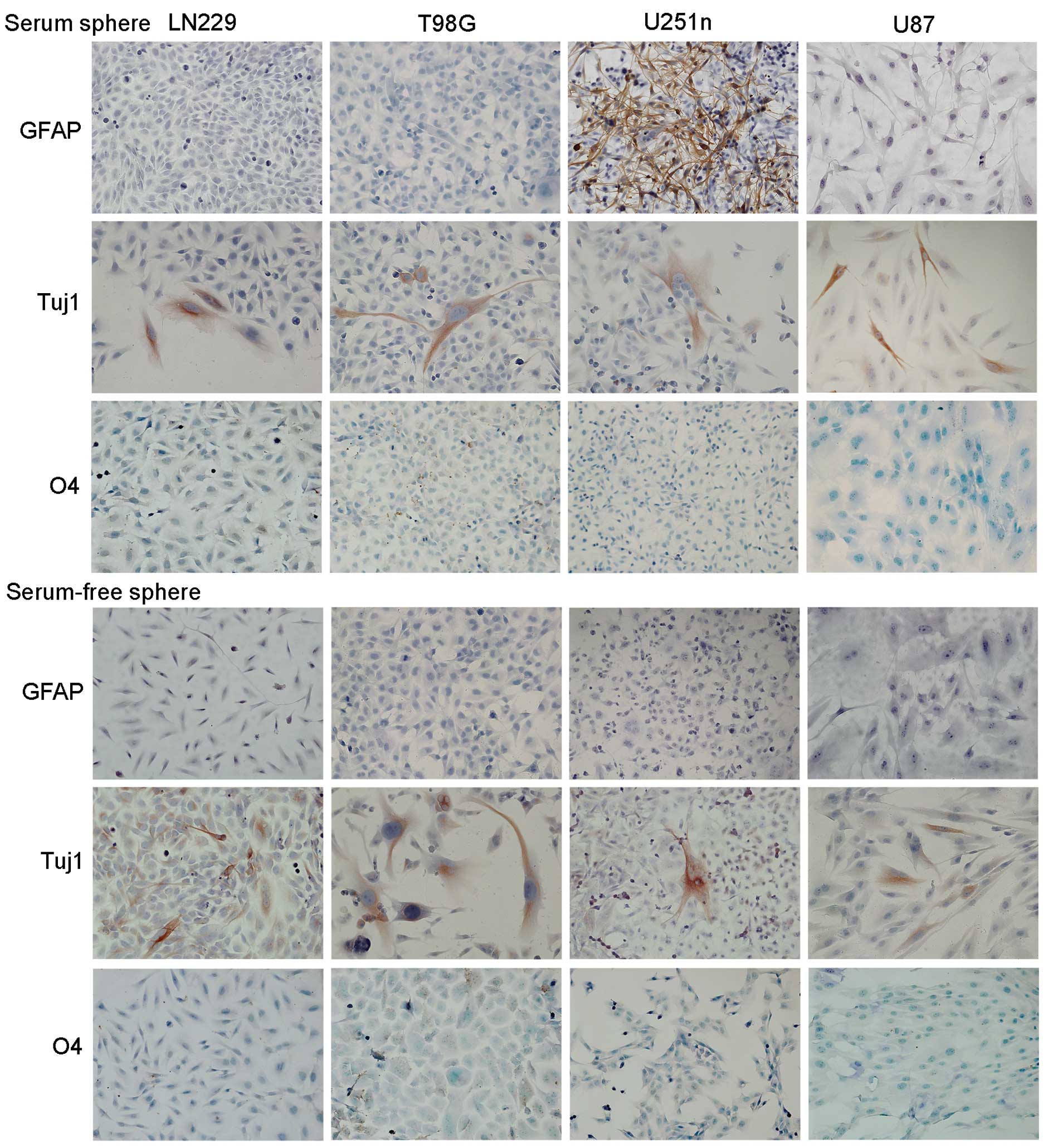|
1.
|
Qiao B, Johnson NW, Chen X, Li R, Tao Q
and Gao J: Disclosure of a stem cell phenotype in an oral squamous
cell carcinoma cell line induced by BMP-4 via an
epithelial-mesenchymal transition. Oncol Rep. 26:455–461.
2011.PubMed/NCBI
|
|
2.
|
Dalerba P, Cho RW and Clarke MF: Cancer
stem cells: models and concepts. Annu Rev Med. 58:267–284. 2007.
View Article : Google Scholar : PubMed/NCBI
|
|
3.
|
Venere M, Fine HA, Dirks PB and Rich JN:
Cancer stem cells in gliomas: identifying and understanding the
apex cell in cancer’s hierarchy. Glia. 59:1148–1154.
2011.PubMed/NCBI
|
|
4.
|
Reya T, Morrison SJ, Clarke MF and
Weissman IL: Stem cells, cancer, and cancer stem cells. Nature.
414:105–111. 2001. View
Article : Google Scholar : PubMed/NCBI
|
|
5.
|
Marques DS, Sandrini JZ, Boyle RT, Marins
LF and Trindade GS: Relationships between multidrug resistance
(MDR) and stem cell markers in human chronic myeloid leukemia cell
lines. Leuk Res. 34:757–762. 2010. View Article : Google Scholar : PubMed/NCBI
|
|
6.
|
Storci G, Sansone P, Mari S, et al:
TNFalpha up-regulates SLUG via the NF-kappaB/HIF1alpha axis, which
imparts breast cancer cells with a stem cell-like phenotype. J Cell
Physiol. 225:682–691. 2010. View Article : Google Scholar : PubMed/NCBI
|
|
7.
|
Yip NC, Fombon IS, Liu P, et al:
Disulfiram modulated ROS-MAPK and NFkappaB pathways and targeted
breast cancer cells with cancer stem cell-like properties. Br J
Cancer. 104:1564–1574. 2011. View Article : Google Scholar : PubMed/NCBI
|
|
8.
|
Lapidot T, Sirard C, Vormoor J, et al: A
cell initiating human acute myeloid leukaemia after transplantation
into SCID mice. Nature. 367:645–648. 1994. View Article : Google Scholar : PubMed/NCBI
|
|
9.
|
Galli R, Binda E, Orfanelli U, et al:
Isolation and characterization of tumorigenic, stem-like neural
precursors from human glioblastoma. Cancer Res. 64:7011–7021. 2004.
View Article : Google Scholar : PubMed/NCBI
|
|
10.
|
Singh SK, Clarke ID, Hide T and Dirks PB:
Cancer stem cells in nervous system tumors. Oncogene. 23:7267–7273.
2004. View Article : Google Scholar : PubMed/NCBI
|
|
11.
|
Leis O, Eguiara A, Lopez-Arribillaga E, et
al: Sox2 expression in breast tumours and activation in breast
cancer stem cells. Oncogene. 31:1354–1365. 2012. View Article : Google Scholar : PubMed/NCBI
|
|
12.
|
Miki J and Rhim JS: Prostate cell cultures
as in vitro models for the study of normal stem cells and cancer
stem cells. Prostate Cancer Prostatic Dis. 11:32–39. 2008.
View Article : Google Scholar : PubMed/NCBI
|
|
13.
|
Zhu Z, Hao X, Yan M, et al: Cancer
stem/progenitor cells are highly enriched in
CD133+CD44+ population in hepatocellular
carcinoma. Int J Cancer. 126:2067–2078. 2010.PubMed/NCBI
|
|
14.
|
Wang T, Ong CW, Shi J, et al: Sequential
expression of putative stem cell markers in gastric carcinogenesis.
Br J Cancer. 105:658–665. 2011. View Article : Google Scholar : PubMed/NCBI
|
|
15.
|
Hwang-Verslues WW, Kuo WH, Chang PH, et
al: Multiple lineages of human breast cancer stem/progenitor cells
identified by profiling with stem cell markers. PLoS One.
4:e83772009. View Article : Google Scholar : PubMed/NCBI
|
|
16.
|
Salcido CD, Larochelle A, Taylor BJ,
Dunbar CE and Varticovski L: Molecular characterisation of side
population cells with cancer stem cell-like characteristics in
small-cell lung cancer. Br J Cancer. 102:1636–1644. 2010.
View Article : Google Scholar : PubMed/NCBI
|
|
17.
|
Fillmore CM and Kuperwasser C: Human
breast cancer cell lines contain stem-like cells that self-renew,
give rise to phenotypically diverse progeny and survive
chemotherapy. Breast Cancer Res. 10:R252008. View Article : Google Scholar : PubMed/NCBI
|
|
18.
|
Rentala S and Mangamoori LN: Isolation,
characterization and mobilization of prostate cancer tissue derived
CD133+ MDR1+ cells. J Stem Cells. 5:75–81.
2010.PubMed/NCBI
|
|
19.
|
Strojnik T, Rosland GV, Sakariassen PO,
Kavalar R and Lah T: Neural stem cell markers, nestin and musashi
proteins, in the progression of human glioma: correlation of nestin
with prognosis of patient survival. Surg Neurol. 68:133–144. 2007.
View Article : Google Scholar : PubMed/NCBI
|
|
20.
|
Uchida N, Buck DW, He D, et al: Direct
isolation of human central nervous system stem cells. Proc Natl
Acad Sci USA. 97:14720–14725. 2000. View Article : Google Scholar : PubMed/NCBI
|
|
21.
|
Singh SK, Hawkins C, Clarke ID, et al:
Identification of human brain tumour initiating cells. Nature.
432:396–401. 2004. View Article : Google Scholar : PubMed/NCBI
|
|
22.
|
Ying M, Wang S, Sang Y, et al: Regulation
of glioblastoma stem cells by retinoic acid: role for Notch pathway
inhibition. Oncogene. 30:3454–3467. 2011. View Article : Google Scholar : PubMed/NCBI
|
|
23.
|
Luk SU, Lee TK, Liu J, et al:
Chemopreventive effect of PSP through targeting of prostate cancer
stem cell-like population. PLoS One. 6:e198042011. View Article : Google Scholar : PubMed/NCBI
|
|
24.
|
Shi MF, Jiao J, Lu WG, et al:
Identification of cancer stem cell-like cells from human epithelial
ovarian carcinoma cell line. Cell Mol Life Sci. 67:3915–3925. 2010.
View Article : Google Scholar : PubMed/NCBI
|
|
25.
|
Chandrasekaran S and DeLouise LA:
Enriching and characterizing cancer stem cell sub-populations in
the WM115 melanoma cell line. Biomaterials. 32:9316–9327. 2011.
View Article : Google Scholar : PubMed/NCBI
|
|
26.
|
Fan X, Ouyang N, Teng H and Yao H:
Isolation and characterization of spheroid cells from the HT29
colon cancer cell line. Int J Colorectal Dis. 26:1279–1285. 2011.
View Article : Google Scholar : PubMed/NCBI
|
|
27.
|
Zou J, Yu XF, Bao ZJ and Dong J: Proteome
of human colon cancer stem cells: a comparative analysis. World J
Gastroenterol. 17:1276–1285. 2011. View Article : Google Scholar : PubMed/NCBI
|
|
28.
|
Zheng X, Shen G, Yang X and Liu W: Most C6
cells are cancer stem cells: evidence from clonal and population
analyses. Cancer Res. 67:3691–3697. 2007. View Article : Google Scholar : PubMed/NCBI
|
|
29.
|
Qiang L, Yang Y, Ma YJ, et al: Isolation
and characterization of cancer stem like cells in human
glioblastoma cell lines. Cancer Lett. 279:13–21. 2009. View Article : Google Scholar : PubMed/NCBI
|
|
30.
|
Li A, Walling J, Kotliarov Y, et al:
Genomic changes and gene expression profiles reveal that
established glioma cell lines are poorly representative of primary
human gliomas. Mol Cancer Res. 6:21–30. 2008. View Article : Google Scholar : PubMed/NCBI
|
|
31.
|
deCarvalho AC, Nelson K, Lemke N, et al:
Gliosarcoma stem cells undergo glial and mesenchymal
differentiation in vivo. Stem Cells. 28:181–190. 2010.PubMed/NCBI
|
|
32.
|
Weissman IL, Anderson DJ and Gage F: Stem
and progenitor cells: origins, phenotypes, lineage commitments, and
transdifferentiations. Annu Rev Cell Dev Biol. 17:387–403. 2001.
View Article : Google Scholar : PubMed/NCBI
|
|
33.
|
Wu Y and Wu PY: CD133 as a marker for
cancer stem cells: progresses and concerns. Stem Cells Dev.
18:1127–1134. 2009. View Article : Google Scholar : PubMed/NCBI
|
|
34.
|
Clevers H: The cancer stem cell: premises,
promises and challenges. Nat Med. 17:313–319. 2011. View Article : Google Scholar : PubMed/NCBI
|
|
35.
|
Okamoto R, Takano H, Okamura T, et al:
O(6)-methylgua-nine-DNA methyltransferase (MGMT) as a determinant
of resistance to camptothecin derivatives. Jpn J Cancer Res.
93:93–102. 2002. View Article : Google Scholar : PubMed/NCBI
|
|
36.
|
Lee JS, Gil JE, Kim JH, et al: Brain
cancer stem-like cell genesis from p53-deficient mouse astrocytes
by oncogenic Ras. Biochem Biophys Res Commun. 365:496–502. 2008.
View Article : Google Scholar : PubMed/NCBI
|
|
37.
|
Moon JH, Kwon S, Jun EK, et al:
Nanog-induced dedifferentiation of p53-deficient mouse astrocytes
into brain cancer stem-like cells. Biochem Biophys Res Commun.
412:175–181. 2011.PubMed/NCBI
|



